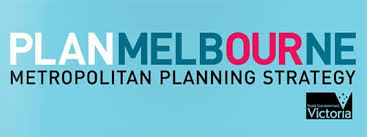Plan Melbourne released May 2014 – heritage incentives

Plan Melbourne 2014 includes an initiative to create incentives for heritage conservation. The specific short-term initiative is: “Investigate the potential of transferable development rights for significant heritage conservation and development projects, including by examining the experience of other jurisdictions with this approach.”
This is a welcome initiative. Several development sites in the Melbourne CBD have compromised or will compromise heritage values by inappropriate development that could have been transferred to other sites. This includes both places included on the Victorian Heritage Register and the heritage overlay of the City of Melbourne Planning Scheme. For example, the forthcoming QIC development at 80 Collins Street will build over the airspace of the Le Louvre building.
A Transferable Development Rights (TDR) program seeks to preserve landowners’ asset value by moving the right to build from a place where development is restricted or prohibited (e.g. for heritage reasons) to a location where development is encouraged.
In 2004 Transferable Development Rights (TDRs) were discussed in a report by the Environmental Protection and Heritage Council:
”An owner of an historic property may sell unused development rights to a developer of another site. Subject to other planning requirements, this may enable the developer to construct a larger building on the ‘recipient site’ than would normally be allowed.”
”The owner of the historic property may use part or all of the proceeds to pay for repairs and maintenance.
The City of Sydney operates the Heritage Floor Space (HFS) scheme. Under the HFS, an owner of a heritage property may be awarded an amount of HFS by conserving the property. Once all conservation works are completed to the council’s satisfaction, the HFS can then be sold or exchanged to enable additional floor space to be built in a new development. Between 1990 and 2001, around 78 sales of HFS took place under the
scheme accounting for 119,000m2. Sale prices varied, but averaged around $608 per square metre in 2000 and $450 per square metre in 2001.30 Adelaide City Council operates a Transferable Floor Area program. Eleven transactions were approved between 1988 and 1993, with none since. The Adelaide CBD is experiencing an
economic downturn with a surplus of office space, and hence there is no demand for heritage floor space transfers. The Adelaide City Council is now considering an alternate approach using transferable floor area as a means of obtaining other planning dispensations.”
”The effectiveness of TDR schemes depends on the presence of a buoyant market for development
rights, usually in the central business district of large cities. TDR schemes can be undermined where the planning provisions for building density, height limits and bonuses are too generous. Sydney is the only capital city in Australia where TDR has proven a useful incentive over an extended period of time.”
+ There are no comments
Add yours